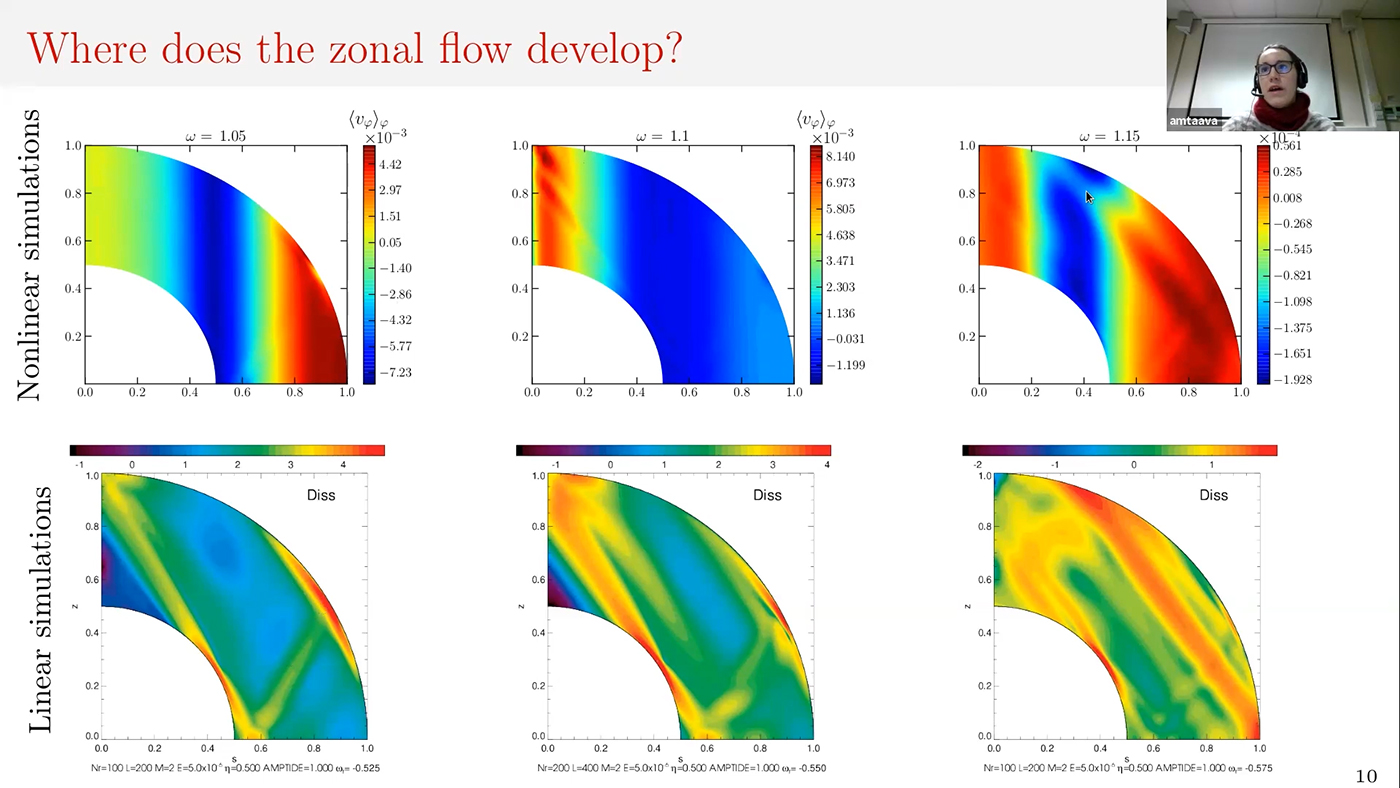'Complex tidal flow interactions in stellar and planetary convective envelopes' by Aurélie Astoul (Leeds)
Duration: 56 mins 18 secs
Share this media item:
Embed this media item:
Embed this media item:
About this item

| Description: | Talk given by Dr Aurélie Astoul (University of Leeds) at Department of Engineering, University of Cambridge, 12 May 2023, as part of the CUED Fluids seminar series. |
|---|
| Created: | 2023-10-03 10:44 |
|---|---|
| Collection: | Cambridge Engineering Dept Fluids Seminars |
| Publisher: | University of Cambridge |
| Copyright: | Dr Aurélie Astoul |
| Language: | eng (English) |
| Abstract: | In close star/star or star/planet systems, tidal interactions are known to shape the orbital architecture of the system, and modify the star and planet spins. Most stars around which planets have been discovered are low-mass solar-type stars, and thus feature a magnetised and often differentially-rotating convective envelope, as is also expected in giant gaseous planets. The dissipation of tidal flows, and more specifically the dissipation of inertial waves (restored by the Coriolis acceleration) is of particular importance in the convective envelopes, especially in the early stages of the life of an exoplanetary system. In parallel, the non-linear self-interactions of inertial waves are able to trigger differential rotation in convective shells in the form of axisymmetric zonal flows. In turn, linear numerical studies have shown that differential rotation can strongly affect the properties of inertial waves, namely their propagation and the dissipation of their kinetic energy.
In this context, I will present our recent results of (magneto-)hydrodynamical non-linear numerical simulations of tidally-forced inertial waves, in 3D spherical convective shells. The emerging zonal flow strength and structure largely depend on the viscosity, tidal forcing amplitude and frequency. When strong, these flows deeply modify tidal dissipation rates from prior linear predictions. Moreover, we also find evidences of strong wave/wave and wave/zonal flow interactions leading to parametric and shear flow instabilities due to correlation resonances (when the Doppler-shifted frequency vanishes). Therefore, I will discuss to what extent these various non-linear effects disrupt the linear predictions for tides along the permissible forcing frequency range and for various viscosities, tidal amplitudes and size of the convective shells which are representative of the convective envelopes of low-mass stars and giant gaseous planets. |
|---|---|
Available Formats
| Format | Quality | Bitrate | Size | |||
|---|---|---|---|---|---|---|
| MPEG-4 Video | 1280x720 | 2.94 Mbits/sec | 1.21 GB | View | Download | |
| MPEG-4 Video | 640x360 | 1.12 Mbits/sec | 473.78 MB | View | Download | |
| WebM | 1280x720 | 1.7 Mbits/sec | 718.45 MB | View | Download | |
| WebM | 640x360 | 440.97 kbits/sec | 181.89 MB | View | Download | |
| iPod Video | 480x360 | 483.79 kbits/sec | 199.49 MB | View | Download | |
| MP3 | 44100 Hz | 249.74 kbits/sec | 103.35 MB | Listen | Download | |
| Auto * | (Allows browser to choose a format it supports) | |||||

